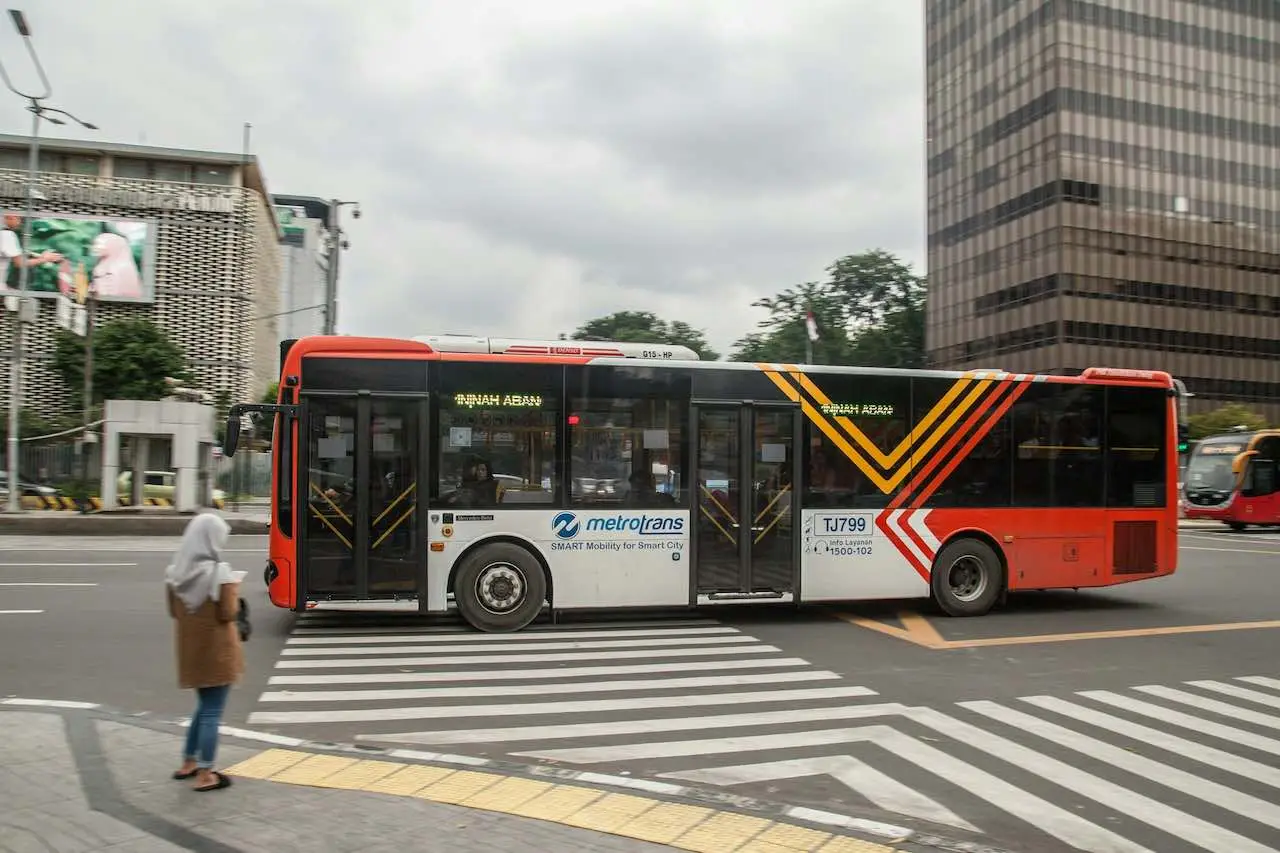
Saturday, 14 Dec 2024

Transit advertising has become one of the most effective marketing methods in Indonesia, especially in major cities like Jakarta, Bandung, and Surabaya. With an increasing number of people relying on public transportation in their daily routines, the potential for advertising inside public vehicles and around stations is growing. Here are some interesting statistics that demonstrate the effectiveness of transit advertising in Indonesia.
According to data from the Jabodetabek Transportation Management Agency (BPTJ), the number of public transport passengers in Jakarta reaches over 3 million people every day. With this number, transit advertising provides a significant opportunity to reach a wide and diverse audience.
A study conducted by Nielsen showed that transit advertising has high attention levels, with 74% of respondents claiming they pay attention to ads while using public transport. This is much higher compared to other traditional advertising media such as newspapers and magazines.
According to a survey conducted by Research and Marketing Services (RMS), approximately 46% of consumers reported that they made a decision to purchase a product or use a service after seeing a transit ad. This indicates that advertising in public transport not only attracts attention but also encourages action.
With technological advancements, digital advertising in public transport, such as LED screens inside buses and trains, is becoming increasingly popular. Data shows that digital advertising in public transport can increase brand awareness by up to 32% compared to print ads. This makes digital advertising a more appealing choice for advertisers.
Transit advertising allows advertisers to reach specific audience segments. Based on data from the Indonesian Advertising Entrepreneurs Association (APII), around 60% of public transport passengers are workers and professionals aged between 25 and 45 years. This provides an opportunity to target advertising campaigns to relevant demographics.
Compared to other advertising methods, transit advertising tends to be more affordable. The cost of placing ads inside buses or trains can be significantly lower than that of other outdoor media like billboards. According to data from the Indonesian Survey Institute (LSI), transit advertising has a more competitive cost per impression, making it a cost-effective option for businesses with limited budgets.
Transit advertising also serves as a bridge to social media campaigns. According to a study by Socialbakers, 30% of people who see transit ads are expected to seek more information about the brand on social media platforms. This indicates that transit advertising can enhance engagement on online platforms, reinforcing the marketing message being conveyed.
Transit advertising in Indonesia offers various advantages for advertisers, from extensive reach to high attention levels. With the continuous development of public transportation infrastructure and digital technology, the potential for transit advertising is becoming more promising. For companies looking to increase brand awareness and drive sales, investing in transit advertising can be a highly effective strategy. Considering the interesting statistics that demonstrate its effectiveness, now is the perfect time to leverage this opportunity and reach a larger audience through transit advertising.

Lestari Ads Agency - PT Lestari Dev Solusindo
Lestari Ads Agency is a leading out-of-home media company with the largest network in Indonesia. Lestari Ads Agency aims to create an inspiring journey by building the most effective, accessible and innovative data and advertising ecosystem, thus revolutionizing the way companies connect with their audiences. Lestari Ads has brightened up Indonesia's main streets and points of interest with LED Digital, traditional and iconic high-quality transit ads. We focus on providing impactful, innovative, effective and accessible advertising space.
The most trusted OOH advertising agency in Indonesia
Experience the top of visibility with Indonesia's leading out-of-home (OOH) advertising agency. We specialize in turning the urban landscape into a dynamic canvas for your brand, crafting compelling narratives that capture the imagination of millions. Our mastery over strategic placements and innovative formats ensures your message not only reaches, but resonates with a diverse and expansive audience. With a proven track record of delivering high-impact campaigns across Indonesia's bustling cities and beyond, we redefine what's possible in OOH advertising.
Find the best quality billboard advertising space with variety of size and dimension
out-of-home advertising, digital billboards, traditional billboards, transit advertising, street furniture advertising, outdoor signage, digital ooh, led billboards, static billboards, large format advertising, advertising displays, ooh media, advertising billboards, outdoor digital screens, urban advertising, roadside billboards, digital signage, retail advertising, poster advertising, mobile billboard advertising, digital transit ads, interactive ooh, airport advertising, mall advertising, cinema advertising, sports venue advertising, digital outdoor advertising, public transportation ads, taxi advertising, bus shelter ads, pedestrian advertising, advertising kiosks, outdoor media solutions, billboard marketing, ooh advertising strategies, ooh media planning, digital billboard solutions, smart billboard advertising, contextual ooh ads, geotargeted ooh ads, location-based ooh, smart outdoor ads, programmatic ooh, data-driven ooh, brand awareness billboards, large-scale ooh campaigns, outdoor advertising effectiveness, billboard design, high-traffic billboard locations, hyperlocal ooh, street-level ooh, public transit advertising, ooh campaign management, outdoor digital displays, media buyers ooh, roadside digital ads, metro station advertising, shopping center ads, ooh advertising trends, outdoor media buying, bus wrap advertising, illuminated billboards, building wrap advertising, branded outdoor advertising, billboard networks, freeway advertising, expressway billboards, train station advertising, out-of-home advertising campaigns, event-based ooh ads, ooh media buying strategies, proximity-based ooh, national ooh campaigns, city-wide ooh advertising, large-scale outdoor campaigns, integrated ooh solutions, ooh digital networks, smart city advertising, mobile billboard solutions, dynamic outdoor ads, highway billboard advertising, ooh media optimization, digital out-of-home screens, high-impact ooh ads, retail digital signage, interactive billboard advertising, regional ooh advertising, local outdoor advertising, consumer engagement ooh, brand visibility outdoor ads, targeted billboard advertising, digital advertising screens, urban billboard advertising, weather-triggered ooh ads, motion sensor billboards, flexible ooh solutions, sustainable outdoor advertising, renewable energy billboards, solar-powered billboards, ooh for small businesses, outdoor brand activations.
Frequently Ask Questions
About Us

